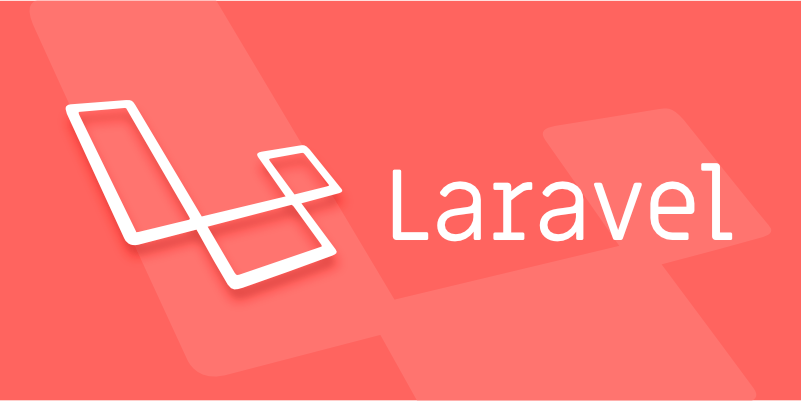Implementing User Authentication using Laravel Fortify?
Jul 14, 2025 am 02:41 AMLaravel Fortify provides a way to implement user authentication without building from scratch. First install Laravel Fortify through Composer: composer requires laravel/fortify, and then publish resources and perform database migration to create the necessary data tables. 1. Enable the required functions: Enable registration, email verification, password reset and other functions in config/fortify.php, and configure the email driver to support email verification. 2. Custom authentication logic: modify redirect paths, verification rules, etc. by extending the default controller or creating a custom request processing class. 3. Front-end integration: Since Fortify does not provide front-end views, it is necessary to create forms yourself or integrate them with Inertia.js, Livewire and other tools to ensure that CSRF is included and input fields are named correctly; if it is a SPA or API project, it can be combined with Laravel Sanctum to implement token authentication. In addition, you need to pay attention to the session configuration and the speed limit settings to prevent brute force cracking.

Laravel Fortify is a great way to handle user authentication without having to build everything from scratch. It gives you solid backend support for login, registration, password reset, and more — all without any frontend scaffolding, which means you can plug it into your existing UI or build your own.

Here's how to get started with implementing user authentication using Laravel Fortify in a practical, no-nonsense way.

Install and Set Up Laravel Fortify
First things first: install Fortify via Composer.
composer requires laravel/fortify
Once installed, publish Fortify's resources:

php artisan vendor:publish --provider="Laravel\Fortify\FortifyServiceProvider"
This will create a config file and the necessary stubs for things like views and models if you want to customize them later.
Then run the database migration:
php artisan migrate
You'll now have tables like users and password_reset_tokens ready to go.
Enable Features Based on Your Needs
Fortify comes with several built-in features that you can enable selectively by editing the config/fortify.php file.
Some of the most commonly used options include:
- Registration – allow new users to sign up
- Email Verification – force users to confirm their email before logging in
- Password Reset – let users recover their account if they forget their password
For example, if you want to enable email verification, make sure this line is present in the features array:
Features::emailVerification(),
Don't forget to use the VerifiesEmail trait in your User model:
use Illuminate\Contracts\Auth\MustVerifyEmail; use Laravel\Fortify\TwoFactorAuthenticatable; class User extends Authenticatable implements MustVerifyEmail
Also, make sure your app has a working mail driver configured so users actually receive the verification link.
Customize Authentication Logic (If Needed)
By default, Fortify handles basic authentication flows out of the box. But what if you need to tweak things like redirect paths, validation rules, or add custom logic?
You can do that by creating custom request handlers.
For example, to customize the registration process:
Create a new class:
php artisan make:controller Auth/RegisteredUserController
In your controller, extend Fortify's base controller and override the method:
use Laravel\Fortify\Http\Controllers\RegisteredUserController as BaseRegisteredUserController; class RegisteredUserController extends BaseRegisteredUserController { public function store() { // Add your custom logic here return parent::store(); } }Update RouteServiceProvider to point to your new handler:
Fortify::createUsersUsing([App\Actions\Fortify\CreateNewUser::class, 'create']);
This is especially useful when you need to hook into events like "user registered" or modify how data is stored during registration.
Handle Frontend Integration Smoothly
Since Fortify doesn't ship with frontend views, you'll need to create your own forms or integrate with tools like Inertia.js or Livewire.
For simple form-based login or registration, just POST to the correct routes:
-
/login -
/register -
/password/email(for reset link) -
/password/reset(to submit new password)
Make sure your forms include CSRF tokens (
@csrf) and match the expected input names likeemail,password, etc.If you're building a SPA or using APIs, Fortify also supports token-based authentication through Laravel Sanctum. Just enable Sanctum in your project and update the middleware accordingly.
Depending on your project setup, some parts might need extra attention — like making sure your session configuration works across subdomains, or handling rate limiting to prevent brute-force attacks.
But overall, Laravel Fortify keeps things straightforward while giving you enough flexibility to build around it. No need to reinvent the wheel every time you start a new project.
Basically that's it.
The above is the detailed content of Implementing User Authentication using Laravel Fortify?. For more information, please follow other related articles on the PHP Chinese website!
-

Hot AI Tools

Undress AI Tool
Undress images for free

Undresser.AI Undress
AI-powered app for creating realistic nude photos

AI Clothes Remover
Online AI tool for removing clothes from photos.

Clothoff.io
AI clothes remover

Video Face Swap
Swap faces in any video effortlessly with our completely free AI face swap tool!

Hot Article

Hot Tools

Notepad++7.3.1
Easy-to-use and free code editor

SublimeText3 Chinese version
Chinese version, very easy to use

Zend Studio 13.0.1
Powerful PHP integrated development environment

Dreamweaver CS6
Visual web development tools

SublimeText3 Mac version
God-level code editing software (SublimeText3)
 How to use CodeIgniter4 framework in php?
May 31, 2023 pm 02:51 PM
How to use CodeIgniter4 framework in php?
May 31, 2023 pm 02:51 PM
PHP is a very popular programming language, and CodeIgniter4 is a commonly used PHP framework. When developing web applications, using frameworks is very helpful. It can speed up the development process, improve code quality, and reduce maintenance costs. This article will introduce how to use the CodeIgniter4 framework. Installing the CodeIgniter4 framework The CodeIgniter4 framework can be downloaded from the official website (https://codeigniter.com/). Down
 How to use PHP functions for LDAP connection and user authentication?
Jul 24, 2023 pm 11:51 PM
How to use PHP functions for LDAP connection and user authentication?
Jul 24, 2023 pm 11:51 PM
How to use PHP functions for LDAP connection and user authentication? LDAP (Lightweight Directory Access Protocol) is a protocol for accessing and maintaining distributed directory information. In web applications, LDAP is often used for user authentication and authorization. PHP provides a series of functions to implement LDAP connection and user authentication. Let's take a look at how to use these functions. Connecting to the LDAP server To connect to the LDAP server, we can use the ldap_connect function. The following is a connection to the LDAP server
 How to use sessions for user authentication in the Slim framework
Jul 28, 2023 pm 05:57 PM
How to use sessions for user authentication in the Slim framework
Jul 28, 2023 pm 05:57 PM
Method of using sessions (Sessions) for user authentication in the Slim framework In web applications, user authentication is an important function, which ensures that only authorized users can access restricted resources. Sessions are a commonly used authentication method that ensures that users remain authenticated throughout the session by storing user identity and status information. The Slim framework provides convenient tools and middleware to handle sessions and user authentication. Below we will introduce how to use sessions in the Slim framework
 ThinkPHP6 user login and registration: realizing user authentication function
Aug 12, 2023 am 11:49 AM
ThinkPHP6 user login and registration: realizing user authentication function
Aug 12, 2023 am 11:49 AM
ThinkPHP6 user login and registration: implementing user authentication function Introduction: User login and registration is one of the common requirements of most web applications. In ThinkPHP6, user login and registration operations can be easily realized by using the built-in user authentication function. This article will introduce how to implement user authentication function in ThinkPHP6, and attach code examples. 1. Introduction to user authentication function User authentication refers to the process of verifying user identity. In web applications, user authentication usually involves user login
 How to use Flask-Security to implement user authentication and authorization
Aug 04, 2023 pm 02:40 PM
How to use Flask-Security to implement user authentication and authorization
Aug 04, 2023 pm 02:40 PM
How to use Flask-Security to implement user authentication and authorization Introduction: In modern web applications, user authentication and authorization are essential functions. To simplify this process, Flask-Security is a very useful extension that provides a series of tools and functions to make user authentication and authorization simple and convenient. This article will introduce how to use Flask-Security to implement user authentication and authorization. 1. Install the Flask-Security extension: at the beginning
 How to implement user authentication and authorization functions through the Webman framework?
Jul 07, 2023 am 09:21 AM
How to implement user authentication and authorization functions through the Webman framework?
Jul 07, 2023 am 09:21 AM
How to implement user authentication and authorization functions through the Webman framework? Webman is a lightweight web framework based on Python, which provides rich functions and flexible scalability. In development, user authentication and authorization are very important functions. This article will introduce how to use the Webman framework to implement these functions. Install Webman First, we need to install Webman. You can use the pip command to install: pipinstallwebman
 How to implement user authentication and permission control in PHP projects?
Nov 02, 2023 pm 12:38 PM
How to implement user authentication and permission control in PHP projects?
Nov 02, 2023 pm 12:38 PM
How to implement user authentication and permission control in PHP projects? In modern web applications, user authentication and permission control are one of the most important functions. User authentication is used to verify the user's identity and permissions, while permission control determines the user's access permissions to various resources in the system. Implementing user authentication and permission control in PHP projects can protect the security of user data and ensure that only authorized users of the system can access sensitive information. This article will introduce a basic method to help you implement user authentication and permission control functions to ensure
 How to do user authentication and authorization in CakePHP?
Jun 05, 2023 am 08:31 AM
How to do user authentication and authorization in CakePHP?
Jun 05, 2023 am 08:31 AM
In web development, user authentication and authorization are one of the very important functions. CakePHP, as a popular PHP framework, provides many convenient tools to deal with these problems. In this article, we will introduce how to do user authentication and authorization in CakePHP. What is user authentication and authorization? In web applications, user authentication refers to verifying the identity of the user. It typically involves the user entering a username and password, and then the application verifying that these credentials are correct. After authentication, the application can identify the user as






